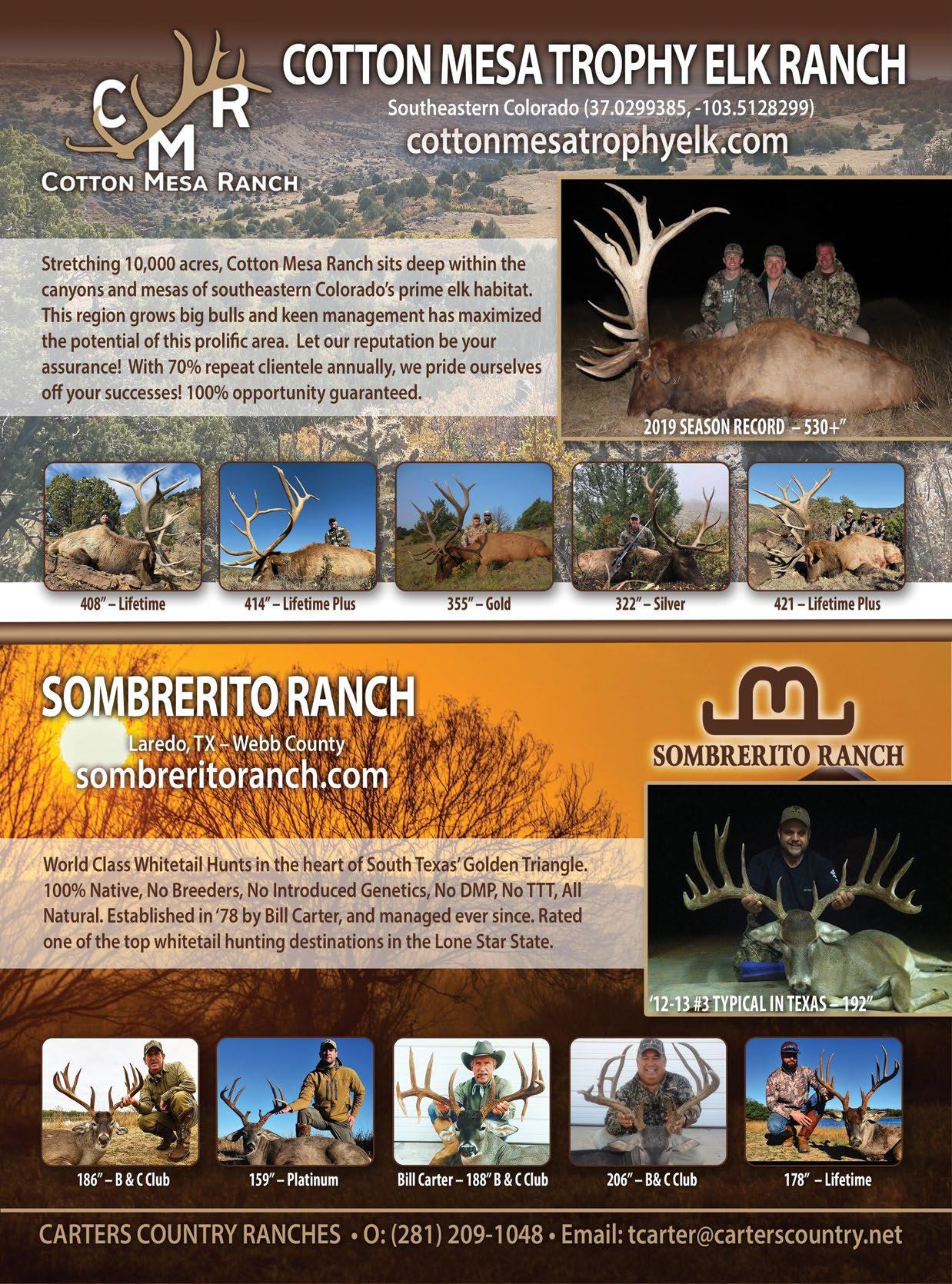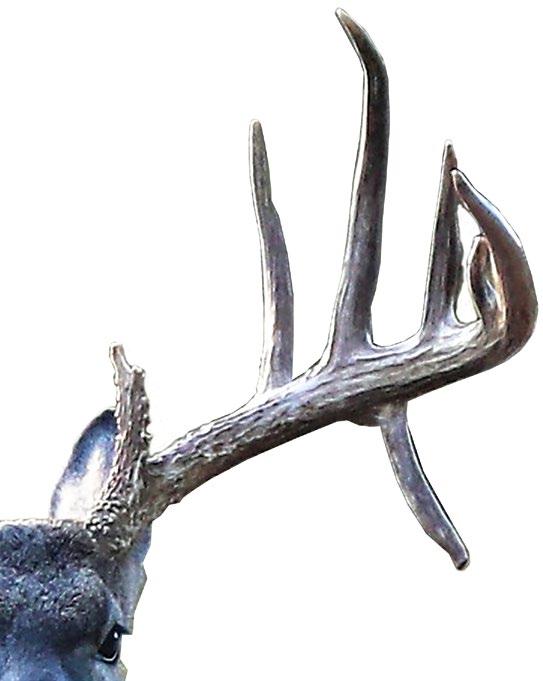
5 minute read
Texas Trends in Deer Management
Texas Trends in
Deer Management
BY JASON SHIPMAN
Intensive deer management has gained tremendous popularity over the past 20 years. Management practices have evolved over this time in an effort to continue making strides toward achieving desired objectives. The goal of most management programs is to produce trophy quality bucks by increasing overall averages. As the quality of antler growth improves in a deer herd, the average increases, shifting the bell-shaped curve further to the right. This shift signifies improvement in age, nutrition, and
Helicopters are commonly used for census and deer trapping.
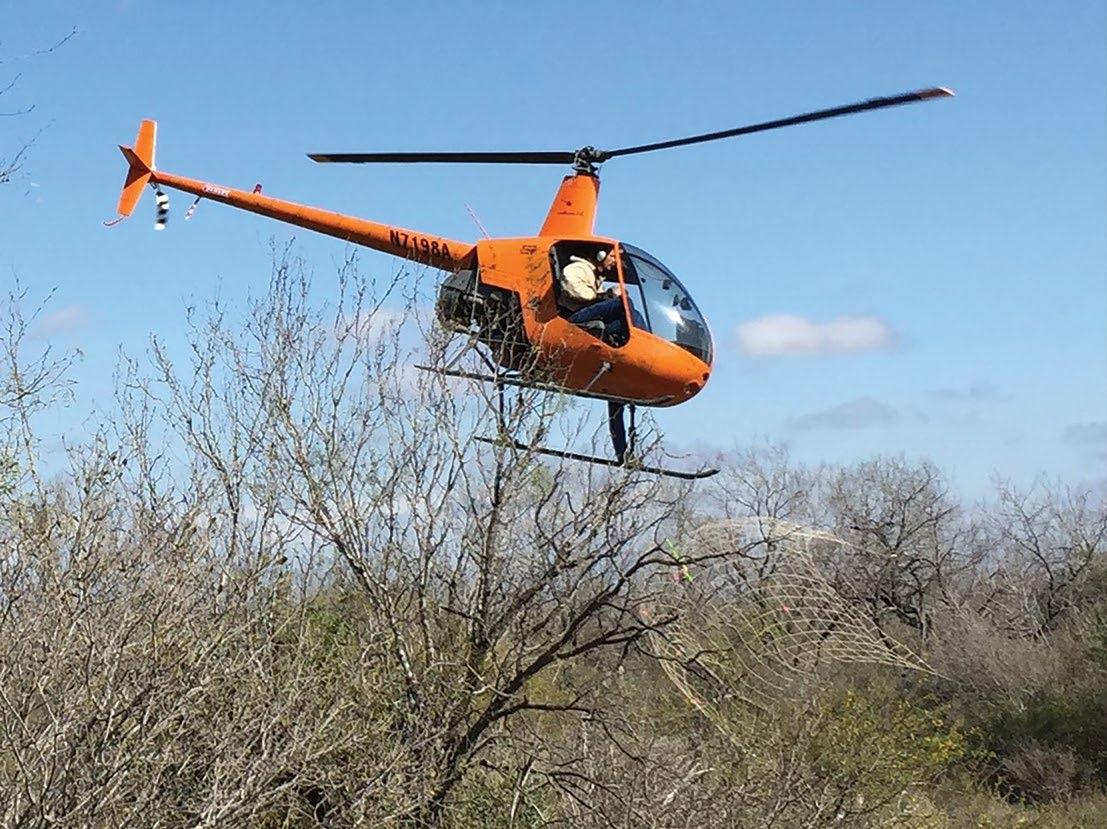
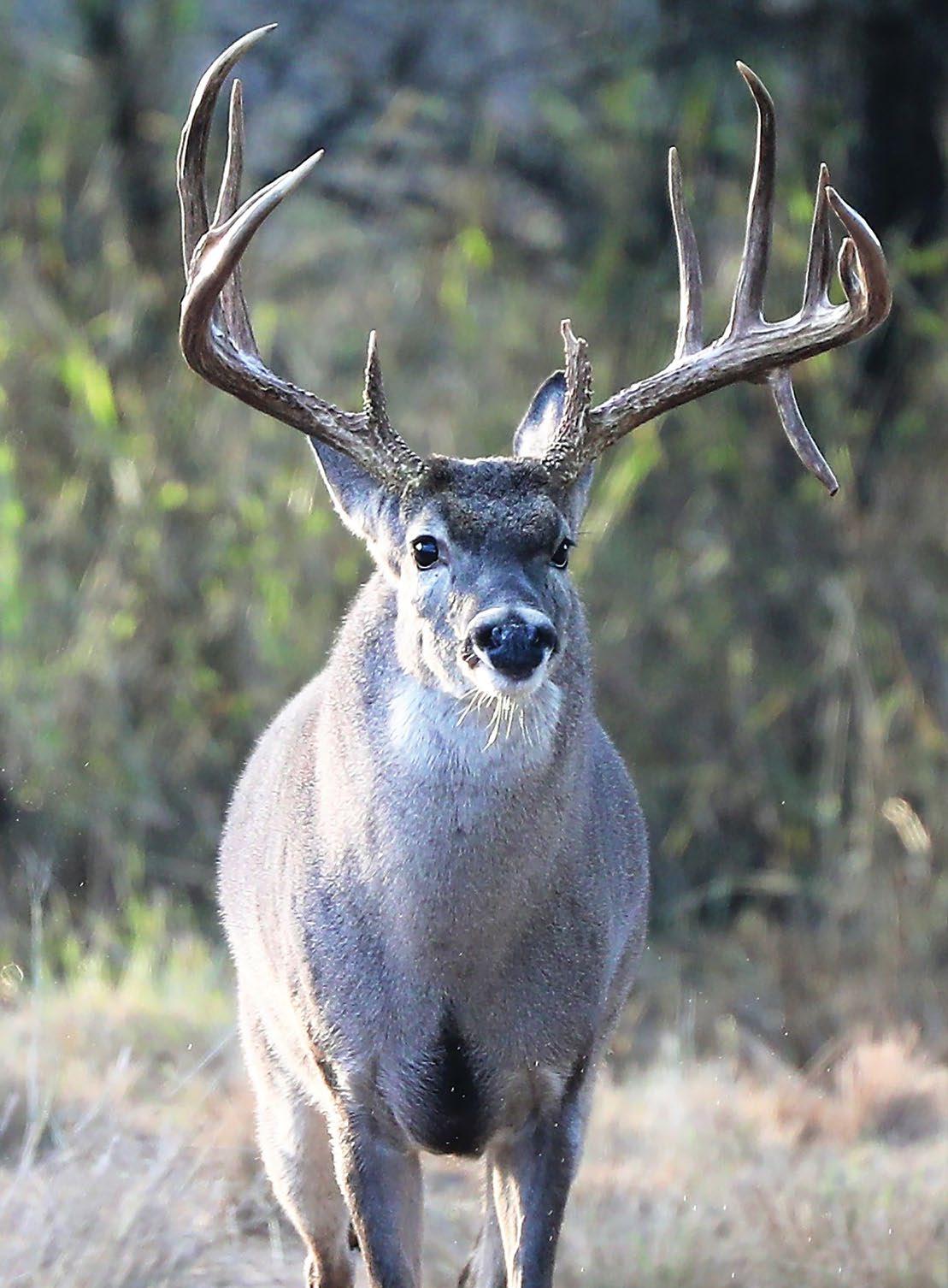
High-quality bucks benefit from intensive management.
genetics brought about by the management influence on the herd.
The late ’90s brought about many changes to the hunting and deer management world as we know it today. Public awareness of management practices such as harvest strategy, habitat manipulation, and supplemental feeding became commonplace. Additionally, the proliferation of high fences and the advent of deer breeding facilities made it possible to produce trophy caliber deer in areas where it was once considered to be impossible. New and improved rations of supplemental feeding became available and widely used to help increase the nutritional plane of deer herds. Trail cameras were created and entered the scene, giving users the ability to observe deer 24 hours a day in their natural environment. These were just a few of the many contributing factors that provided landowners and managers the latitude and ability to manage with a higher degree of intensity.
Utilization of the more intensive methods has become an effective way of cutting the time horizon of some management programs in half. Specific goals determine the tools required and the level of management necessary to achieve them. Assuming the more basic management concepts have been addressed, this discussion will take an in-depth look at some of the widely popular tools utilized. Among these are a number of permits available through the Texas Parks and Wildlife Department. Flexibility is afforded with these permits by way of extended seasons, increased bag limits, enhanced breeding and propagation, etc.
The Managed Lands Deer Program (MLD) allows landowners with management programs the opportunity to have extended hunting seasons and bag limits. Since its inception in 1996, the program has gained tremendous popularity and currently over 10,000 properties are enrolled statewide. The MLD program is incentive based and habitat focused, with two levels of participation.
The higher level of participation provides additional flexibility along with added requirements. These requirements include a written wildlife management plan, conducting habitat management practices, and submitting annual survey and harvest data. Upon MLD enrollment, permits are issued replacing license tags for participating properties, and hunter bag limits and season dates become more flexible depending upon level of issuance. Harvest flexibility afforded by MLD participation has been important for ranches seeking to implement harvest strategy to help maintain or improve their herds.
The Deer Breeder permit allows users to hold whitetail or mule deer in captivity for the purpose of propagation. Generations of selective breeding practices, including artificial insemination, have produced genetically superior offspring. The deer produced from these facilities often have pedigrees backed by DNA testing. Rules regarding utilization of the breeder deer permit are extensive. With the proper permits, breeder deer may be released directly into a high fenced ranch or utilized in conjunction with a DMP permit to help build or augment genetics in the pasture. Foundational genetics are an extremely important part of a successful management program, and breeder deer can be utilized to help expedite results.
The Deer Management Permit, more commonly referred to by
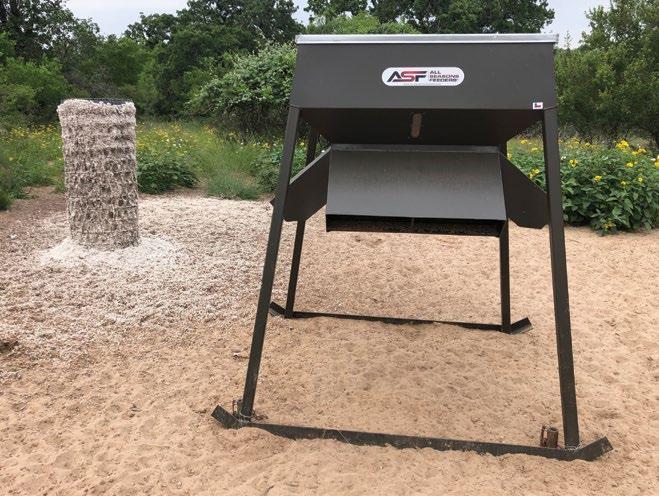
Supplemental feed includes protein and cottonseed.
its acronym, DMP, allows the owner of a high-fenced property to temporarily detain up to 20 does and one buck in an enclosure for breeding purposes. The pen must meet established size and cover requirements. The deer may be caught on the participating ranch, brought in from another ranch with a corresponding Trap, Transport, Transplant Permit (TTT), or obtained from a permitted breeding facility. After breeding season and within the time constraints of the permit, the deer are then released onto the property. Bucks from a breeding facility may be returned to the breeding facility.
The Trap, Transport, Transplant Permit, or TTT, allows excess deer to be captured and removed from a property and released onto another property. The trap site must meet Chronic Wasting Disease testing requirements and the release site must be suitable to support and sustain the additional animals. Prior to permit issuance, trap and release sites must meet approval through TPWD.
Landowners and managers routinely use TTT permits to facilitate stocking excess does from well managed ranches with great genetics to properties wanting to improve their herds. TTT does may be caught prior to the breeding season and placed with appropriate permitting into a DMP pen for selective breeding purposes before being released within permitted time constraints. Bred TTT does may also be caught after the breeding season and released directly into the approved released site.
Implementing a successful management program takes time, money, and a lot of hard work. Professional guidance is strongly encouraged and can help avoid costly mistakes. Rules and paperwork regarding the use of these tools and permits can be extensive. Additionally, associated costs can be prohibitive for many. However, for those interested in utilizing these tools, the rewards are well worth the time and effort.
The bar continues to be set higher with each passing year, and who could have possibly guessed how much ground we would cover in such a short amount of time. There are more big bucks in the brush now than ever before, and there is literally no telling where we’ll ultimately end up. One thing is certain: This is the golden age of whitetail deer hunting and these are the “good ol’ days!” Whether you derive satisfaction from its implementation, or benefit from its success, deer management is here by popular demand.
